The water in my bird feeder was a solid block of ice this morning, Jack Frost had left patterns on my single glazed windows and there was a distant murmur of sleigh bells in the air; it can only mean one thing – winter has arrived! December 1st marks the beginning not only of Advent, but of meteorological winter, so today we will be looking at how winter has appeared in some very beautiful pieces of Brontë writing.
We are also now just one month away from the start of 2020, the 200th birthday year of our beloved Anne Brontë! Please allow me then to give a brief mention of my new book ‘Crave The Rose: Anne Brontë At 200’ which will be released on 1st January, a month today! It will be a very special book indeed featuring many things never published in a book before, but more on that in the New Year. You can pre-order on Amazon at your bookshop or order now via the publisher, The Valley Press from Anne’s very own Scarborough! Here is its rather lovely front cover:
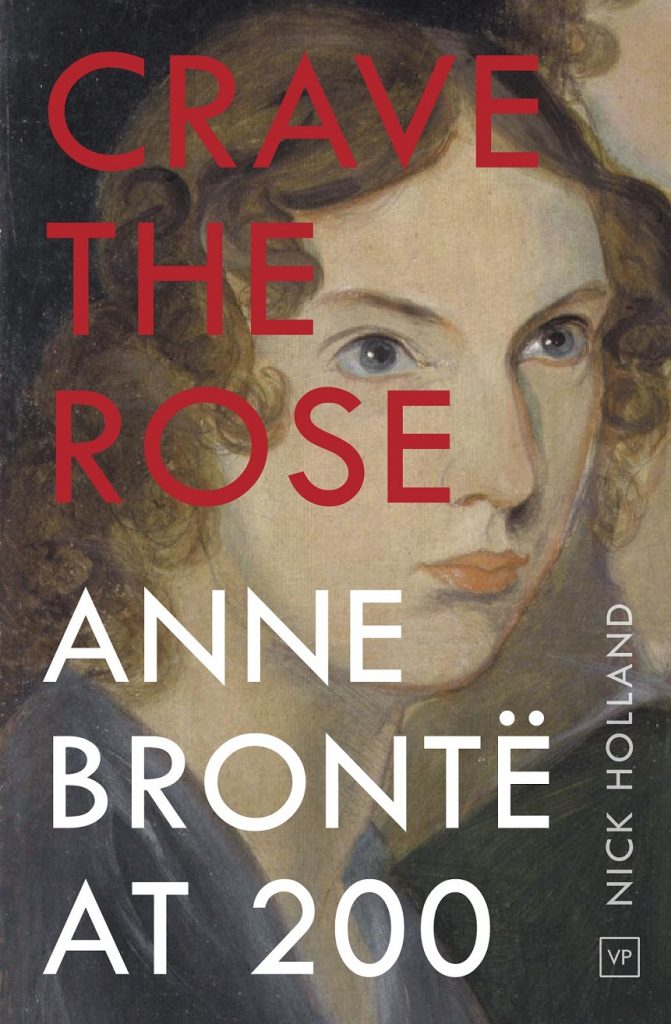
Now, let’s return to chilly winter! Haworth is a beautiful place in winter, with its exposed and elevated position amidst the Pennine moors meaning that it always receives a good covering of snow. It’s a magical place for tourists to visit, but watch out for ice – it’s as treacherous today as it was in December 1836 when loyal old servant Tabby Aykroyd slipped on some ice and broke her leg. She was never as mobile again, but the Brontë siblings loved Tabby and they refused to eat until it was confirmed that she would be allowed to continue living and working in the parsonage.
Wrap up warm, tread carefully, and you are sure to have an incredible time on a winter visit to Haworth. The moors can be especially charming under a wintry blanket, and it was this that tempted Charlotte Brontë to walk them with her new husband Arthur Bell Nicholls, as she recalled in a letter to Ellen Nussey:
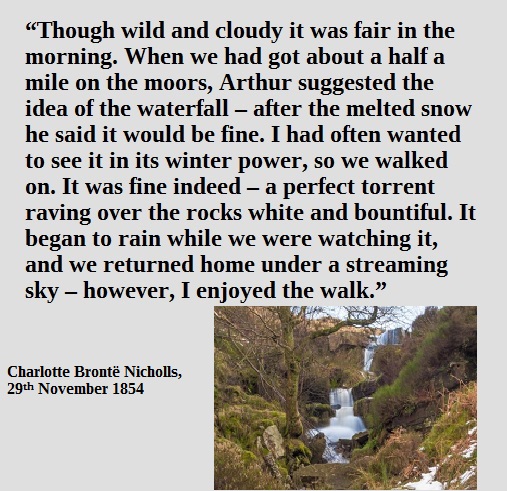
Charlotte could little have guessed that this very same waterfall would one day bear her own family name – a century and a half later they draw tourists to them, eager to see the Brontë Falls. Winter can be found, symbolically, in Charlotte’s novel ‘Villette’ as its heroine is called Lucy Snowe. The importance of this choice is shown by the fact that the protagonist’s name was changed to Snowe during the editing phase – until that point, Charlotte had called her Lucy Frost!
Anne Brontë loved nature, and especially its flowers, and they pop up time and time again in her work. The winter rose, or a Christmas Rose as we might call it, held a special symbolism for her, as we see in this touching scene as Helen and Gilbert prepare to pledge their futures to each other in ‘The Tenant Of Wildfell Hall’:
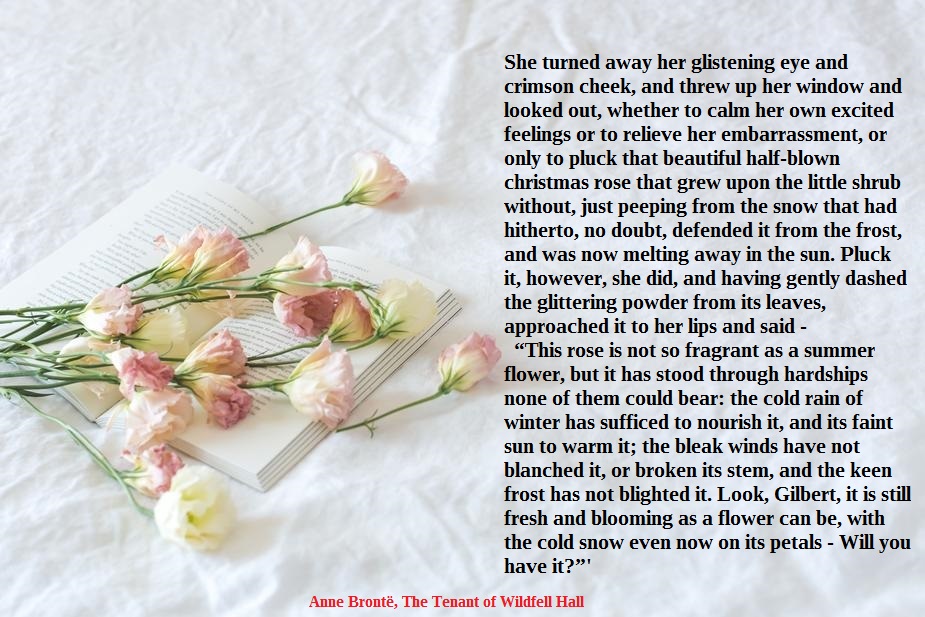
Winter snows also play a central role in ‘The Student’s Serenade’, a very moving poem by Anne, and one of her very best. Moving because we see Anne tired after a day’s study, or possibly a day’s work as a governess at the time she wrote this in 1844, when she is woken by snow falling and immediately thinks of snows falling on the moors she loved – and of one who loved to walk them in the snow with her but who has long been gone:
“I have slept upon my couch
But my spirit did not rest,
For the labours of the day
Yet my weary soul opprest.
And before my dreaming eyes
Still the learned volumes lay,
And I could not close their leaves
And I could not turn away.
While the grim preceptors laughed
And exulted in my woe:
Till I felt my tingling frame
With the fire of anger glow.
But I oped my eyes at last,
And I heard a muffled sound,
‘Twas the night breeze come to say
That the snow was on the ground.
Then I knew that there was rest
On the mountain’s bosom free;
So I left my fevered couch
And I flew to waken thee.
I have flown to waken thee –
For, if thou wilt not arise,
Then my soul can drink no peace
From these holy moonlight skies.
And this waste of virgin snow
To my sight will not be fair
Unless thou wilt smiling come,
Love, to wander with me there.
Then awake! Maria, wake!
For if thou couldst only know
How the quiet moonlight sleeps
On this wilderness of snow
And the groves of ancient trees
In their snowy garb arrayed,
Till they stretch into the gloom
Of the distant valley’s shade.
O, I know thou wouldst rejoice
To inhale this bracing air,
Thou wouldst break thy sweetest sleep
To behold a scene so fair.
O’er these wintry wilds, alone,
Thou wouldst joy to wander free;
And it will not please thee less,
Though that bliss be shared with me.”
Emily Brontë loved nature even more than Anne did, and the wilder it was, the more she loved it. It’s no surprise then that Emily opens her mighty novel ‘Wuthering Heights’ with a fierce snow storm that leads to narrator Lockwood making an early acquaintance with Heathcliff – and Catherine!
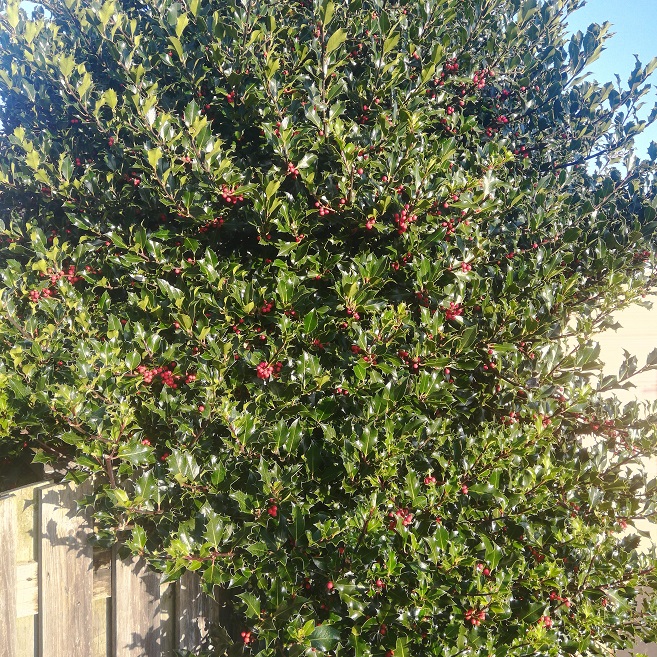
The holly tree has long been synonymous with winter and with Christmas, as the beautiful carol ‘The Holly And The Ivy’ shows. This is an old hymn and its associations are older, for holly has been revered since pagan times. It is a symbol of rebirth, for in the depths of winter it is said that the Holly King reigns over the world, to be replaced by the Oak King when new roots and new life appear. Emily loved the Holly king’s reign, and winter was always a magical time for her. For Emily Brontë, holly also symbolised the importance of friendship, and its pre-eminence over everything else. We see this in her poem ‘Love And Friendship’, also dating from 1844, and obviously written with the love of her life in mind, her closest friends and confidante, Anne Brontë. It is a sweet poem for this sweetest of seasons – so I leave you with it now, and with Emily’s winter blessing – may your garlands always be green!
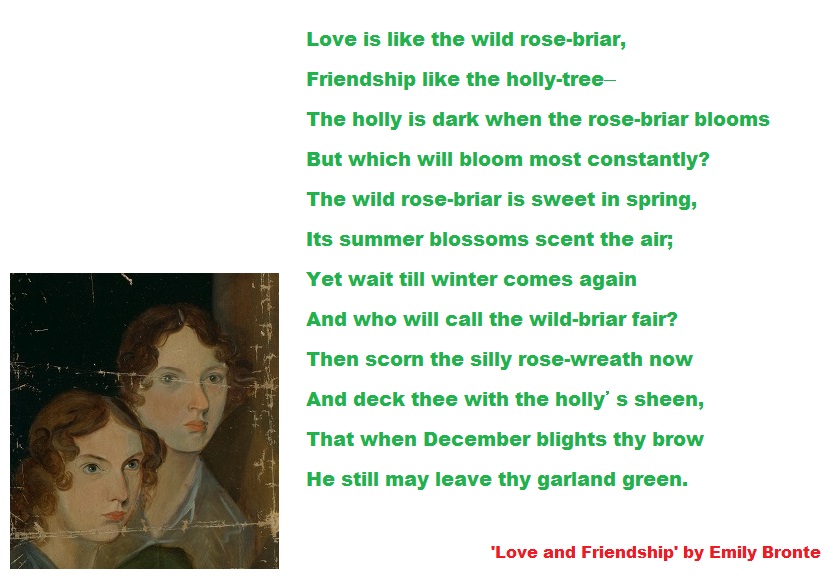
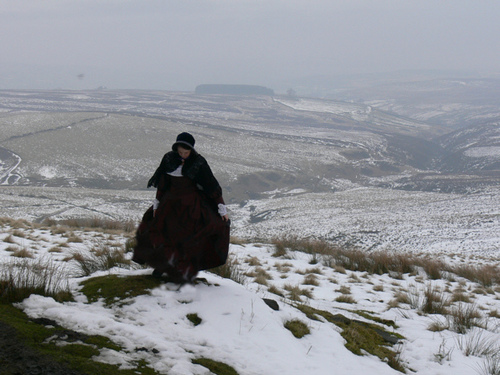
Beautiful. Is your new book filled with essays on Anne Bronte?
Hi Ellen, thank you! It has a nine chapter biography of Anne with one of her poems at the head of each chapter, followed by a section with a previously lost essay by Anne that’s never appeared in a book before, and finally a series of first person encounters with the Brontes from nineteenth century archives!
Just pre-ordered your book. Can’t wait to read it!
Thank you Eric!